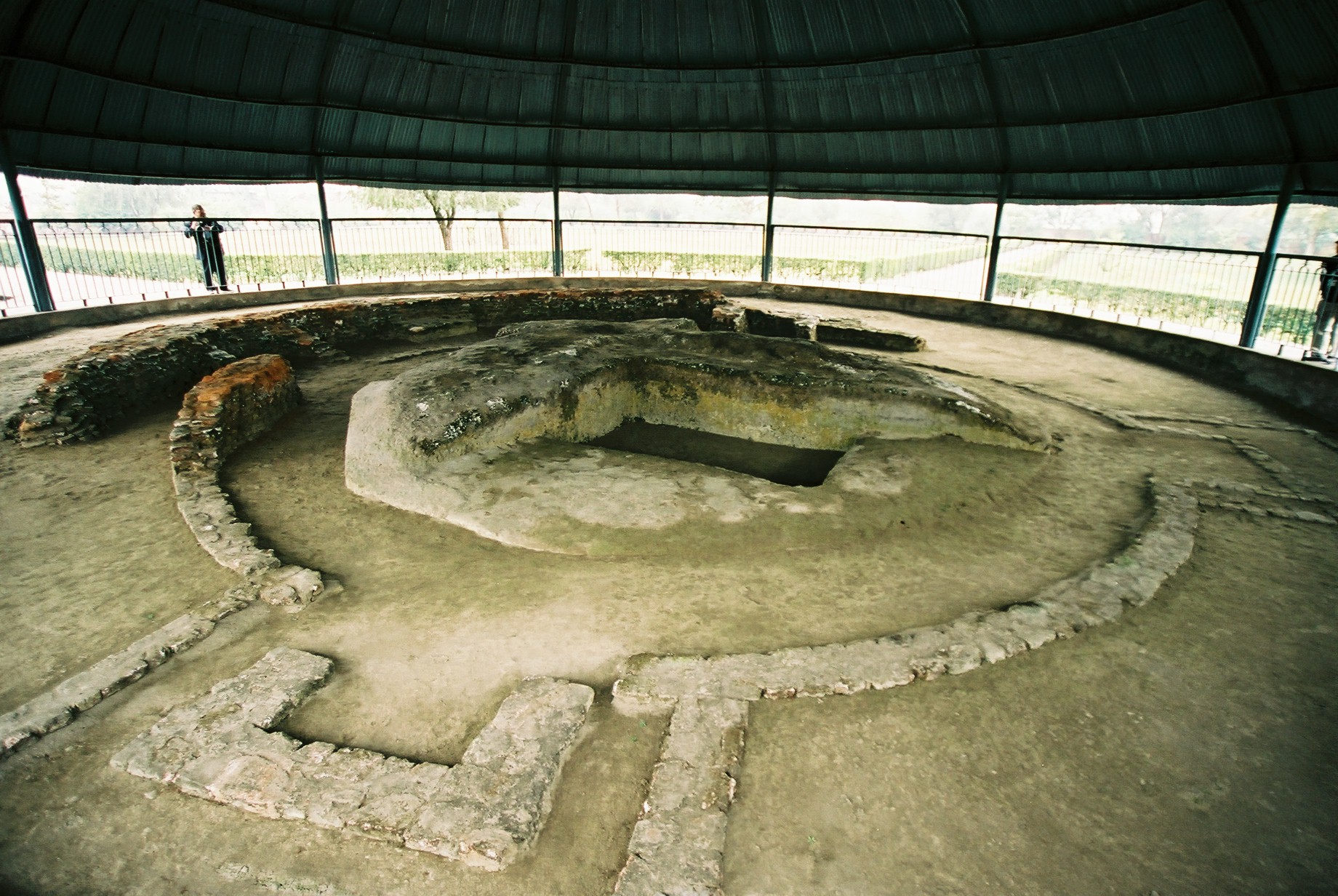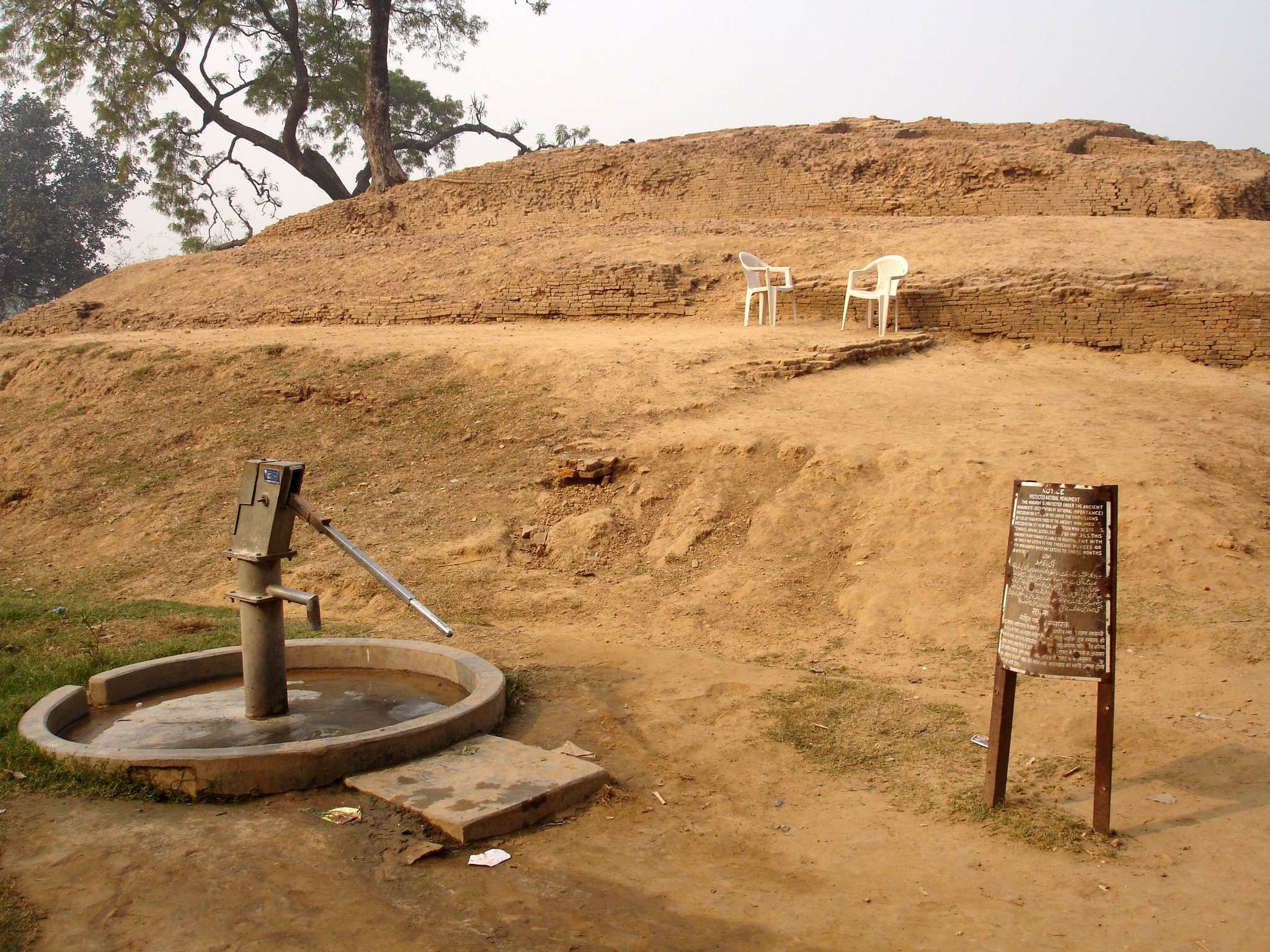|
Vajjika League
The Vajjika (Pāli: ) or Vrijika (Sanskrit: ) League, Confederacy, or Sangha, also called simply Vajji (Pāli: ) or Vriji (Sanskrit: ), was an ancient Indo-Aryan tribal league which existed during the later Iron Age period in north-east South Asia. Constituent tribes The Vajjika League were a league of republican tribal states under the leadership of the Licchavikas centred around the city of Vesālī. The other members of the league were the Vaidehas in the Mithila region, the Nāyikas (Skt. *Jñātrika) of Kuṇḍapura, and the Vajji tribe proper, who were dependencies of the Licchavikas. The Mallakas, who were organised into two separate republics, were also part of the Vajjika League, although they were not dependencies of the Licchavikas and therefore maintained their independence and sovereign rights within the confederation, hence why Jain sources considered the Licchavikas and the neighbouring Mallakas of Kusinārā and Pāvā to be the republican states of K ... [...More Info...] [...Related Items...] OR: [Wikipedia] [Google] [Baidu] |
Iron Age
The Iron Age is the final epoch of the three-age division of the prehistory and protohistory of humanity. It was preceded by the Stone Age ( Paleolithic, Mesolithic, Neolithic) and the Bronze Age ( Chalcolithic). The concept has been mostly applied to Iron Age Europe and the Ancient Near East, but also, by analogy, to other parts of the Old World. The duration of the Iron Age varies depending on the region under consideration. It is defined by archaeological convention. The "Iron Age" begins locally when the production of iron or steel has advanced to the point where iron tools and weapons replace their bronze equivalents in common use. In the Ancient Near East, this transition took place in the wake of the Bronze Age collapse, in the 12th century BC. The technology soon spread throughout the Mediterranean Basin region and to South Asia (Iron Age in India) between the 12th and 11th century BC. Its further spread to Central Asia, Eastern Europe, and Central Europe is ... [...More Info...] [...Related Items...] OR: [Wikipedia] [Google] [Baidu] |
Licchavi (tribe)
Licchavi ( Māgadhī Prakrit: ; Pāli: ; Sanskrit: ) was an ancient Indo-Aryan tribe of north-eastern Indian subcontinent whose existence is attested from the Iron Age to the Classical Age. The population of Licchavi, the Licchavikas, were organised into a (an aristocratic oligarchic republic), presently referred to as the Licchavi Republic, which was the leading state of the larger Vajjika League. Location The Licchavikas lived in the southwest part of the Vajjika League, which was itself bounded to the north, east, south, and west, respectively, by the Himālaya mountains, and the Mahānadī, Gaṅgā, and Sadānirā rivers. The Sadānirā river was the Licchavikas' western border, and the Gaṅgā river as their border with the kingdom of Magadha in the south. The capital of the Licchavikas was located at Vesālī (Vaishali), which also acted as the headquarters of the Vajjika League led by Licchavi. Name The tribal name () is a Māgadhī Prākrit derivation ... [...More Info...] [...Related Items...] OR: [Wikipedia] [Google] [Baidu] |
Himalayas
The Himalayas, or Himalaya (; ; ), is a mountain range in Asia, separating the plains of the Indian subcontinent from the Tibetan Plateau. The range has some of the planet's highest peaks, including the very highest, Mount Everest. Over 100 peaks exceeding in elevation lie in the Himalayas. By contrast, the highest peak outside Asia (Aconcagua, in the Andes) is tall. The Himalayas abut or cross five countries: Bhutan, India, Nepal, China, and Pakistan. The sovereignty of the range in the Kashmir region is disputed among India, Pakistan, and China. The Himalayan range is bordered on the northwest by the Karakoram and Hindu Kush ranges, on the north by the Tibetan Plateau, and on the south by the Indo-Gangetic Plain. Some of the world's major rivers, the Indus, the Ganges, and the Tsangpo– Brahmaputra, rise in the vicinity of the Himalayas, and their combined drainage basin is home to some 600 million people; 53 million people live in the Himalayas. The Himalayas ... [...More Info...] [...Related Items...] OR: [Wikipedia] [Google] [Baidu] |
Buddhaghosa
Buddhaghosa was a 5th-century Indian Theravada Buddhist commentator, translator and philosopher. He worked in the Great Monastery (''Mahāvihāra'') at Anurādhapura, Sri Lanka and saw himself as being part of the Vibhajjavāda school and in the lineage of the Sinhalese Mahāvihāra. His best-known work is the '' Visuddhimagga'' ("Path of Purification"), a comprehensive summary of older Sinhala commentaries on Theravada teachings and practices. According to Sarah Shaw, in Theravada this systematic work is "the principal text on the subject of meditation." The interpretations provided by Buddhaghosa have generally constituted the orthodox understanding of Theravada scriptures since at least the 12th century CE. He is generally recognized by both Western scholars and Theravadins as the most important philosopher and commentator of the Theravada, but is also criticised for his departures from the canonical texts. Name The name Buddhaghosa means "Voice of the Buddha" (''Buddh ... [...More Info...] [...Related Items...] OR: [Wikipedia] [Google] [Baidu] |
Kosala
The Kingdom of Kosala (Sanskrit: ) was an ancient Indian kingdom with a rich culture, corresponding to the area within the region of Awadh in present-day Uttar Pradesh to Western Odisha. It emerged as a small state during the late Vedic period, with connections to the neighbouring realm of Videha. Kosala belonged to the Northern Black Polished Ware culture (c. 700–300 BCE), and the Kosala region gave rise to the Sramana movements, including Jainism and Buddhism. It was culturally distinct from the Painted Grey Ware culture of the Vedic period of Kuru- Panchala west of it, following independent development toward urbanisation and the use of iron. During the 5th century BCE, Kosala incorporated the territory of the Shakya clan, to which the Buddha belonged. According to the Buddhist text '' Aṅguttara Nikāya'' and the Jaina text, the ''Bhagavati Sutra'', Kosala was one of the ''Solasa'' (sixteen) Mahajanapadas (powerful realms) in 6th to 5th centuries BCE, and its cul ... [...More Info...] [...Related Items...] OR: [Wikipedia] [Google] [Baidu] |
Kingdom Of Kashi
Kingdom commonly refers to: * A monarchy ruled by a king or queen * Kingdom (biology), a category in biological taxonomy Kingdom may also refer to: Arts and media Television * ''Kingdom'' (British TV series), a 2007 British television drama starring Stephen Fry * ''Kingdom'' (American TV series), a 2014 US television drama starring Frank Grillo * ''Kingdom'' (South Korean TV series), a 2019 South Korean television series *'' Kingdom: Legendary War'', a 2021 South Korean television series Music * Kingdom (group), a South Korean boy group * ''Kingdom'' (Koda Kumi album), 2008 * ''Kingdom'' (Bilal Hassani album), 2019 * ''Kingdom'' (Covenant Worship album), 2014 * ''Kingdoms'' (Life in Your Way album), 2011 * ''Kingdoms'' (Broadway album), 2009 * ''Kingdom'' (EP), a 1998 EP by Vader * "Kingdom" (Dave Gahan song), 2007 * "Kingdom" (Maverick City Music and Kirk Franklin song), 2022 * "Kingdom", a song by Battle Beast on their 2013 album '' Battle Beast'' * "Kingdom", a so ... [...More Info...] [...Related Items...] OR: [Wikipedia] [Google] [Baidu] |
Pāvā
Pāvā (now Fazilnagar) was an important city of the Malla tribe of ancient India at the time of the Haryanka dynasty of Magadha. It is located about southeast of Kushinagar in the state of Uttar Pradesh, India. Buddhist history When the Buddha reached his eightieth year, he felt that his time in this world was approaching an end. At that time, according to the ''Mahāparinibbāṇa Sutta'' ( Sutta 16 of the ''Dīgha Nikāya''), he and some of his disciples undertook a months-long journey that would take them from Rājagṛha, through Pāṭaliputta, Vesāli, Bhoganagara, and Pāvā, to their final destination at Kuśinagara. It was at Pāvā that Cunda, a resident of Pāvā, invited the group to a meal that featured a food called ''sukaramaddava''. This would prove to be the Buddha's last meal, as he was afflicted by a painful illness resembling dysentery soon after consuming the meal. It was on this occasion that the ''Cunda Sutta'' ( AN 6:46) was preached. At that ... [...More Info...] [...Related Items...] OR: [Wikipedia] [Google] [Baidu] |
Kusinārā
Kushinagar ( Hindustani: or ; Pali: ; Sanskrit: ) is a town in the Kushinagar district in Uttar Pradesh, India. It is an important and popular Buddhist pilgrimage site, where Buddhists believe Gautama Buddha attained ''parinirvana''. Etymology According to Buddhist tradition ''Kushavati'' was named prior to the king Kush. The naming of Kushwati is believed to be due to abundance of Kush grass found in this region. Demographics According to the 2011 Census of India, Kushinagar had 3462 households and a total population of 22,214, of which 11,502 were males and 10,712 were females. The population within the age group of 0 to 6 years was 2,897. The total number of literate people in Kushinagar was 15,150, which constituted 68.2% of the population with male literacy of 73.3% and female literacy of 62.7%. The Scheduled Castes and Scheduled Tribes population was 1,117 (5.03%) and 531 (2.39%) respectively. History The present Kushinagar is identified with Kusavati (in the pre-B ... [...More Info...] [...Related Items...] OR: [Wikipedia] [Google] [Baidu] |
Malla (tribe)
Malla (Prakrit: ; pi, Malla; sa, मल्ल ) was an ancient Indo-Aryan tribe of north-eastern South Asia whose existence is attested during the Iron Age. The population of Malla, the Mallakas, were divided into two branches, each organised into a (an aristocratic oligarchic republic), presently referred to as the Malla Republics, which were part of the larger Vajjika League. Location The Mallakas lived in the region now covered by the Gorakhpur district in India, although their precise borders are yet to be determined. The Mallakas' neighbours to the east across the Sadānirā river were the Licchavikas, their neighbours to the west were the Sakyas, Koliyas, Moriyas, and Kauśalyas, the southern neighbours of the Mallakas were the Kālāmas and the Gaṅgā river, and the northern Mallaka borders were the Himālaya mountains. The territory of the Mallakas was a tract of land between the Vaidehas and the Kauśalyas. The territories of the two Malla republics ... [...More Info...] [...Related Items...] OR: [Wikipedia] [Google] [Baidu] |
Vajji (tribe)
Vajji (Pāli: ) or Vriji (Sanskrit: ) was an ancient Aryan tribe of north-eastern South Asia whose existence is attested during the Iron Age. The population of Vajji, the Vajjikas, were organised into a (an aristocratic oligarchic republic), presently referred to as the Vajji Republic, which was part of the larger Vajjika League. Location The Vajjikas lived in the territory around Vesālī. History The Vajjikas used to be the most powerful tribe in the region around Vesālī, where their territory was located. Later history The Vajjika League was located on the territory of the former Mahā-Videha kingdom. Shortly before or during the lifetime of the Buddha, around the 7th or 6th century BCE, In the 7th or 6th century BCE, the Licchavikas invaded Mahā-Videha, replaced their monarchy by a republican system, and settled down in the southern part of former Mahā-Videha, where they founded their own republican state. After setting up their state, the Licchavikas founded the ... [...More Info...] [...Related Items...] OR: [Wikipedia] [Google] [Baidu] |







